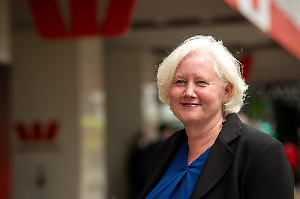
Lower home values and easing interest rates are creating a rare opportunity for first home buyers to buy in Auckland and Wellington, where they been locked out for years, Quotable Value says.
In its April House Price Index (HPI), QV operations manager James Wilson says after five years of significant volatility, the market appears to have stabilised.
“We’re not seeing big swings anymore. Home values are holding steady as we head into winter.”
He says although interest rates are heading down, demand is tempered by cautious buyer sentiment and a large supply of properties.
“For the first time, particularly in parts of Auckland where stand alone homes are now selling in the $700,000s in some areas, something we didn’t see a year ago, now is the time to act.”
QV’s HPI shows the average value of homes rose by just 0.1% over the three months to April to $914,504, down 1.33% when compared to April last year.
Prices in six urban areas dropped. Auckland region was down 0.1%, Tauranga 0.2%, Palmerston North 0.7%, Wellington region 0.5%, Queenstown Lakes 0.4% and Dunedin 0.7%.
Big savings on mortgages
Putting easing interest rates in context, Westpac economists in their latest Economic Overview say for a home loan borrower with an average mortgage of about $380,000, the 217 basis point (bp) drop in the one-year mortgage rate over the past year could have reduced their minimum monthly mortgage payments by about $400, or roughly 4% of their average disposable income.
“This is one of the largest falls in household debt servicing costs seen in the past 30 years,” Kelly Eckhold, Westpac chief economist says.
As far as house prices go, he says while they have increased gradually in six of the last seven months, the housing stock available for sale has matched increased demand. “Prices should continue to rise by 6% year-on-year as lower interest rates are more broadly felt, and when the labour market strengthens.
“An increasing number of borrowers are now rolling onto lower rates, and the boost to disposable incomes will lift consumer spending, but the large rise in living costs in recent years continues to be a drag on discretionary spending.”
However, he says while households’ interest costs are easing, the cooling in the labour market will be challenging for some households.
Unemployment is currently 5.1%, and the bank’s economists expect it will peak at 5.3% later this year. Wage growth has also slowed.




Comments
No comments yet.
Sign In to add your comment